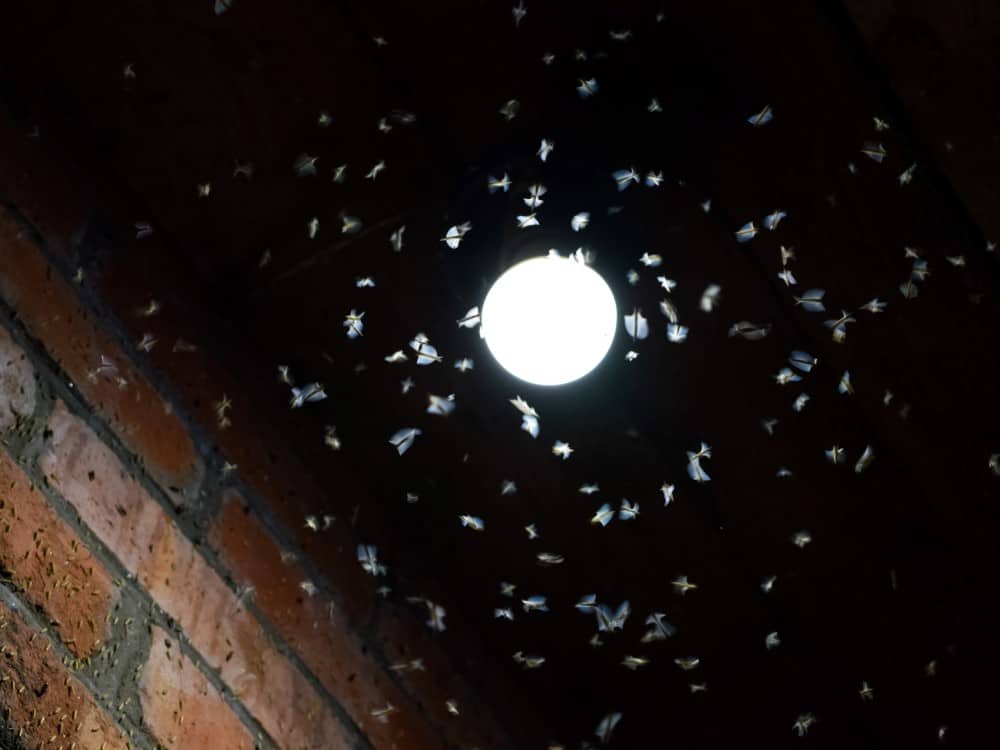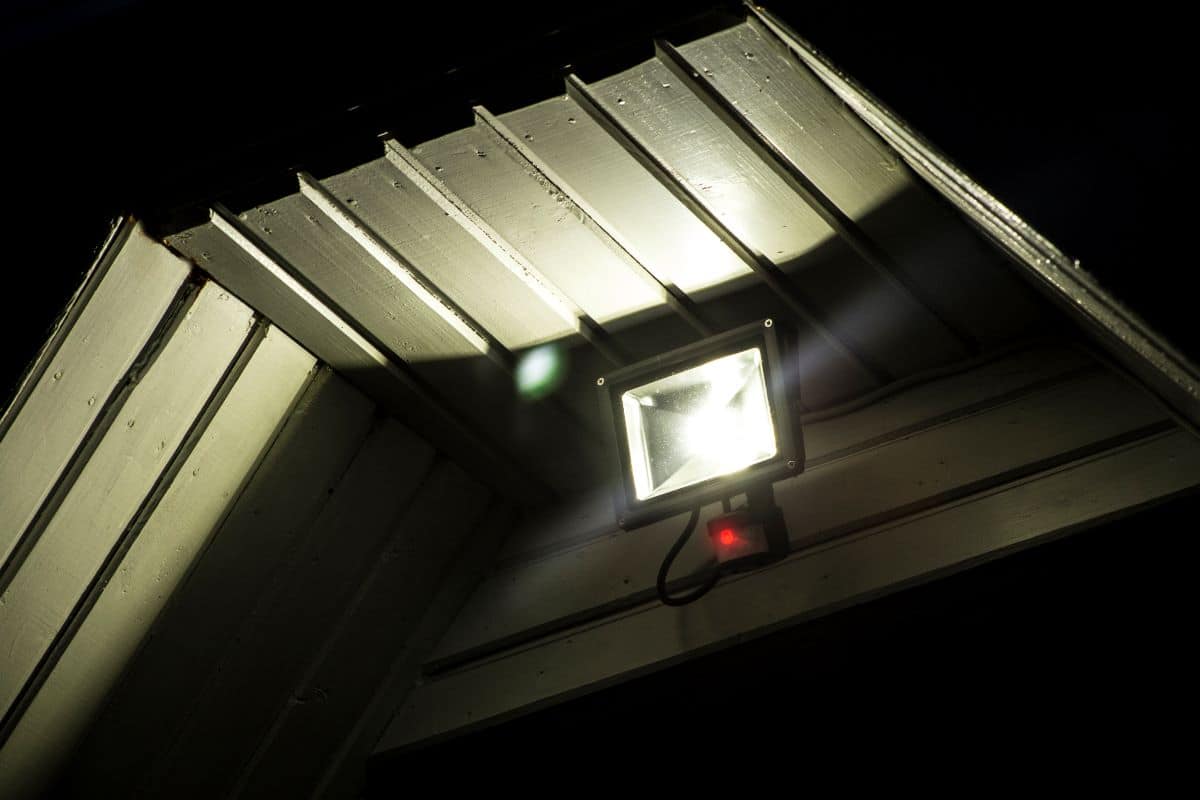Many homeowners install motion sensor lights as a security measure, but what they might not have considered is the possibility of moths and other insects affecting their functionality.
As sensor lights detect movement and heat, the question arises: can moths actually set off these sensor lights?
Moths, being small flying insects, are capable of triggering motion sensor lights as they move past the device. Their body heat, combined with their proximity to the sensor, is enough to activate the lights, even if their overall size is much smaller than what would typically be considered a cause for concern.
This might lead to inconvenience for the homeowners or even false alarms in certain cases.
Understanding the potential issues caused by moths and other insects can help improve the performance of your sensor lights and provide better security solutions.
In the following paragraphs, we will discuss ways to combat this problem, including adjusting sensor settings and using other preventative measures to reduce the chances of triggering false alarms due to pesky insects.
How Sensor Lights Work
Motion sensor lights are a convenient security feature for both residential and commercial spaces, as they automatically illuminate when motion is detected.
These devices work by using different types of sensing technology to detect movement in the surrounding area.
Infrared Sensors
Infrared (IR) sensors are the most common type of sensors used in motion detection lights.
They work by detecting the infrared radiation emitted from a moving object, such as a person or an animal. When the sensor detects an increase in infrared energy within its field of view, it triggers the light to turn on.
IR sensors are advantageous because they can detect motion even in low-light or no-light conditions. Additionally, they are relatively inexpensive and have low power consumption.
However, they can sometimes be triggered by external factors like changes in temperature or other sources of infrared radiation.
Ultrasonic Sensors
Ultrasonic sensors use high-frequency sound waves to detect movement.
They emit ultrasonic waves and listen for their echoes. If an object is in the path of the emitted waves, it will cause a change in the frequency of the reflected waves.
The sensor detects this change and activates the light accordingly.
Ultrasonic sensors are highly sensitive to motion and can cover a wider detection range than IR sensors.
However, they can be prone to false triggers due to sound reflection from other objects or interference from other ultrasonic sources.
Microwave Sensors
Microwave sensors work in a similar manner to ultrasonic sensors but use microwaves instead of sound waves.
They emit microwave radiation and measure the frequency shift caused by the reflection of the waves from a moving object.
When the sensor detects a change in the reflected frequency, it triggers the light to turn on.
Microwave sensors are highly sensitive and can detect motion through walls and other non-metallic materials.
However, they can be more expensive than other sensor types and have a relatively high power consumption.
Moths and Sensor Lights
Moth Behavior Near Lights
Moths are known to be attracted to lights at night, which is a phenomenon called positive phototaxis.

This behavior causes them to fly around and often bump into light sources, including outdoor lighting fixtures and sensor lights.
Read more about their crazy behavior in our article about Moths And Light.
Impact on Sensor Activation
As moths fly close to lights, their movement can trigger motion sensor lights in some instances.
Motion sensors typically work by detecting changes in infrared (IR) energy, which can emit from moving objects like moths when they pass by the sensor.
Insects and small animals can indeed set off PIR motion detectors because they emit the required IR energy necessary for activating the devices.
It is also important to note that factors like the moth’s size, proximity to the sensor, and the type of sensor used can influence whether or not a moth sets off the alarm.
I have seen this myself several times when small insects (like spiders) activated the motion trigger of my security cam.

However, it is more likely for larger insects or animals to trigger the sensor due to their higher IR emissions and movement patterns.
In order to reduce the likelihood of moths setting off sensor lights, homeowners can adjust the sensitivity settings of their motion detectors, or use sensor lights with more specific detection technology.
Additionally, keeping the area around the sensor lights clean and free of debris can help minimize false activations.
Preventing False Triggers
In this section, we’ll discuss various ways to prevent moths and other insects from setting off motion sensor lights by adjusting the sensitivity, ensuring proper placement, and using timers.
Adjusting Sensitivity
One of the simplest ways to reduce false triggers from moths and other insects is to adjust the sensitivity of your motion sensor lights.
Most motion sensor lights have adjustable settings that allow you to control the sensitivity to prevent small insects from causing false triggers.
Lowering the sensitivity can minimize the chances of the motion sensor being activated by moths and bugs.
Proper Placement
Another strategy to reduce false triggers is to install motion sensor lights in locations that are less attractive to moths and other insects.
For instance, you can place the lights at a higher elevation so they’re less likely to be triggered by insects flying near the ground.
Additionally, ensure that any external light fixtures are not shining directly onto the sensors, as this can attract moths and bugs, causing more false triggers.
Furthermore, consider trimming overhanging branches that may obstruct the camera view, as this can also attract insects.
Using Timers
Using timers to control when your motion sensor lights are active can help minimize false triggers caused by moths and other insects.
By setting timers to activate the lights only during specific hours, such as when you’re away from home or during peak insect activity hours, you can reduce the likelihood of false triggers.
Additionally, choosing motion sensors equipped with built-in timers can help provide an extra layer of customization to further minimize false activations caused by insects.
Conclusion
In summary, it is possible for moths and other flying insects to set off sensor lights under certain circumstances.
The factors that contribute to this occurrence include the proximity of the moth to the sensor, the sensitivity settings of the motion detector, and the size of the moth itself.
However, not all sensor lights will be affected by moths and other insects, as this largely depends on the specific type of sensor being used.
It’s worth noting that bugs, spiders, and moths are attracted to motion lights and may inadvertently trigger them at times.
Adjusting the sensitivity settings of your motion sensors and ensuring proper installation can help reduce the likelihood of false alarms caused by insects, such as moths setting off sensor lights.
By taking appropriate measures, you can minimize the chances of moths and other insects causing your sensor lights to activate while still maintaining the security and functionality of your motion detector system.

